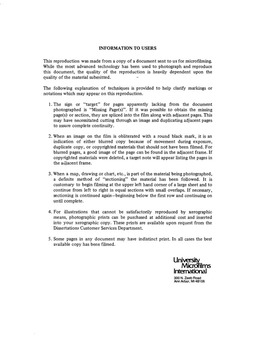| dc.contributor.author | Ammons, David N. | en_US |
| dc.date.accessioned | 2013-08-16T12:28:51Z | |
| dc.date.available | 2013-08-16T12:28:51Z | |
| dc.date.issued | 1983 | en_US |
| dc.identifier.uri | https://hdl.handle.net/11244/5096 | |
| dc.description.abstract | In this study, the topic of municipal productivity is taken from its broadest definitional aspects to the identification of specific factors statistically associated with relative productivity in a narrow stratum of United States cities. The examination of a single stratum of cities, defined by the scope and quality of municipal services, provides a means of controlling the scope and quality of service variables from the outset and avoiding their confounding effects in the analysis of the impact of administrative and extra-administrative factors on municipal productivity. | en_US |
| dc.description.abstract | Organizational and community characteristics of the study cities were examined and correlated with the Relative Productivity Index. Several factors were found to have zero-order Pearson product moment correlations with the index, but upon closer examination only two characteristics were found to be strongly correlated with relative productivity (both positively) when other factors were controlled. Those characteristics--one financial and one managerial--were the ratio of property and sales tax revenues to total general revenues and the extent to which the use of control data (e.g., accounting reports, productivity records, etc.) for self-guidance and group problem solving, rather than for punishment, was emphasized or perceived as a relative strength of the organization. | en_US |
| dc.description.abstract | In order to assess relative productivity among fourteen high-quality full service cities, a Relative Productivity Index was developed by means of statistical regression, using municipal expenditures for selected functions as the dependent variable and a salary index and variations of city population as the independent variables. The Relative Productivity Index provides a measure of each city's actual expenditure deviation from its regression-based projected expenditure. High relative productivity is attributed to those cities spending less than the projected amount, and low relative productivity is attributed to those spending more than the projection. | en_US |
| dc.format.extent | xvii, 401 leaves : | en_US |
| dc.subject | Political Science, Public Administration. | en_US |
| dc.title | Municipal productivity in high-quality service cities / | en_US |
| dc.type | Thesis | en_US |
| dc.thesis.degree | Ph.D. | en_US |
| dc.thesis.degreeDiscipline | Department of Political Science | en_US |
| dc.note | Source: Dissertation Abstracts International, Volume: 44-02, Section: A, page: 0570. | en_US |
| ou.identifier | (UMI)AAI8313777 | en_US |
| ou.group | College of Arts and Sciences::Department of Political Science | |
